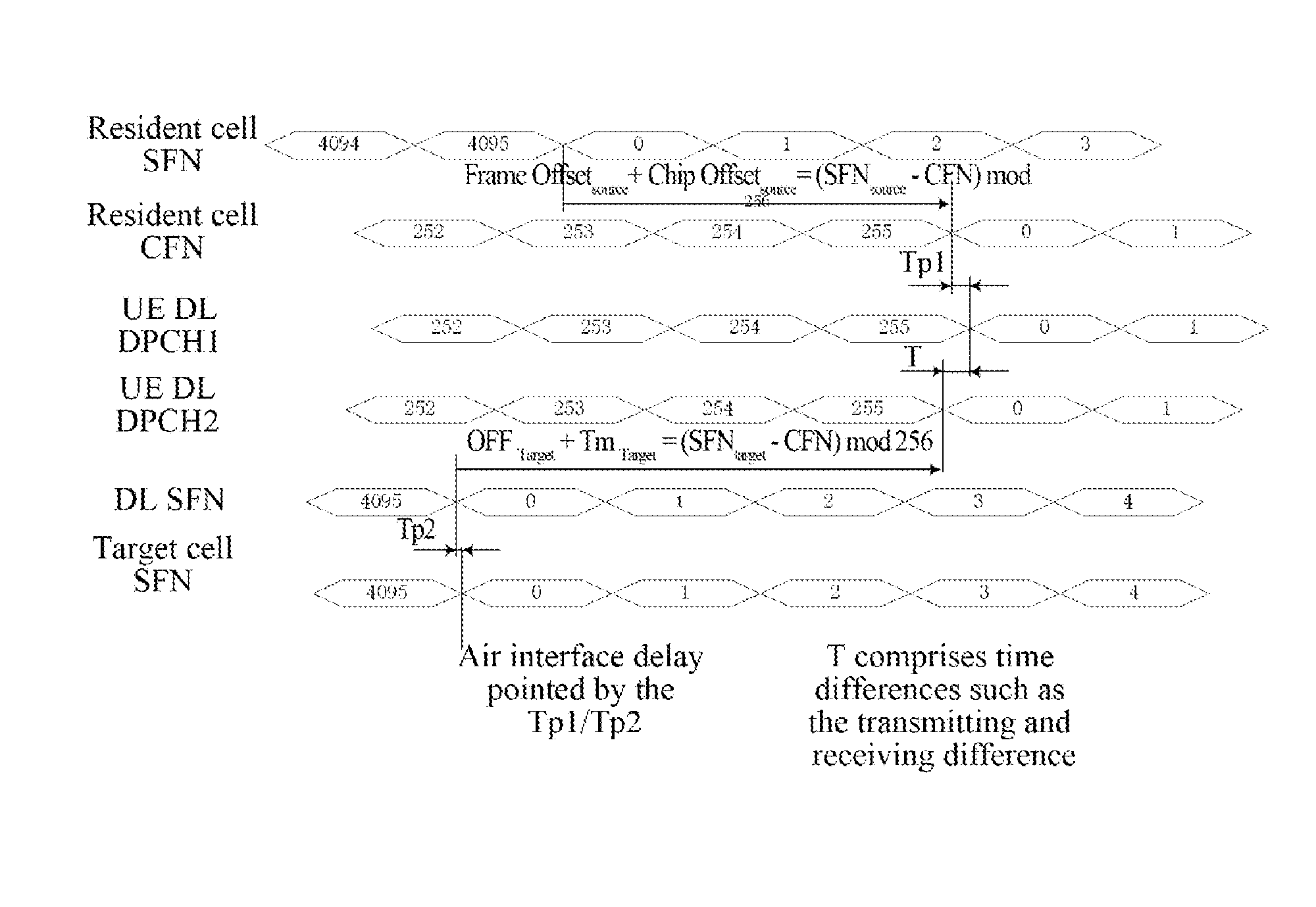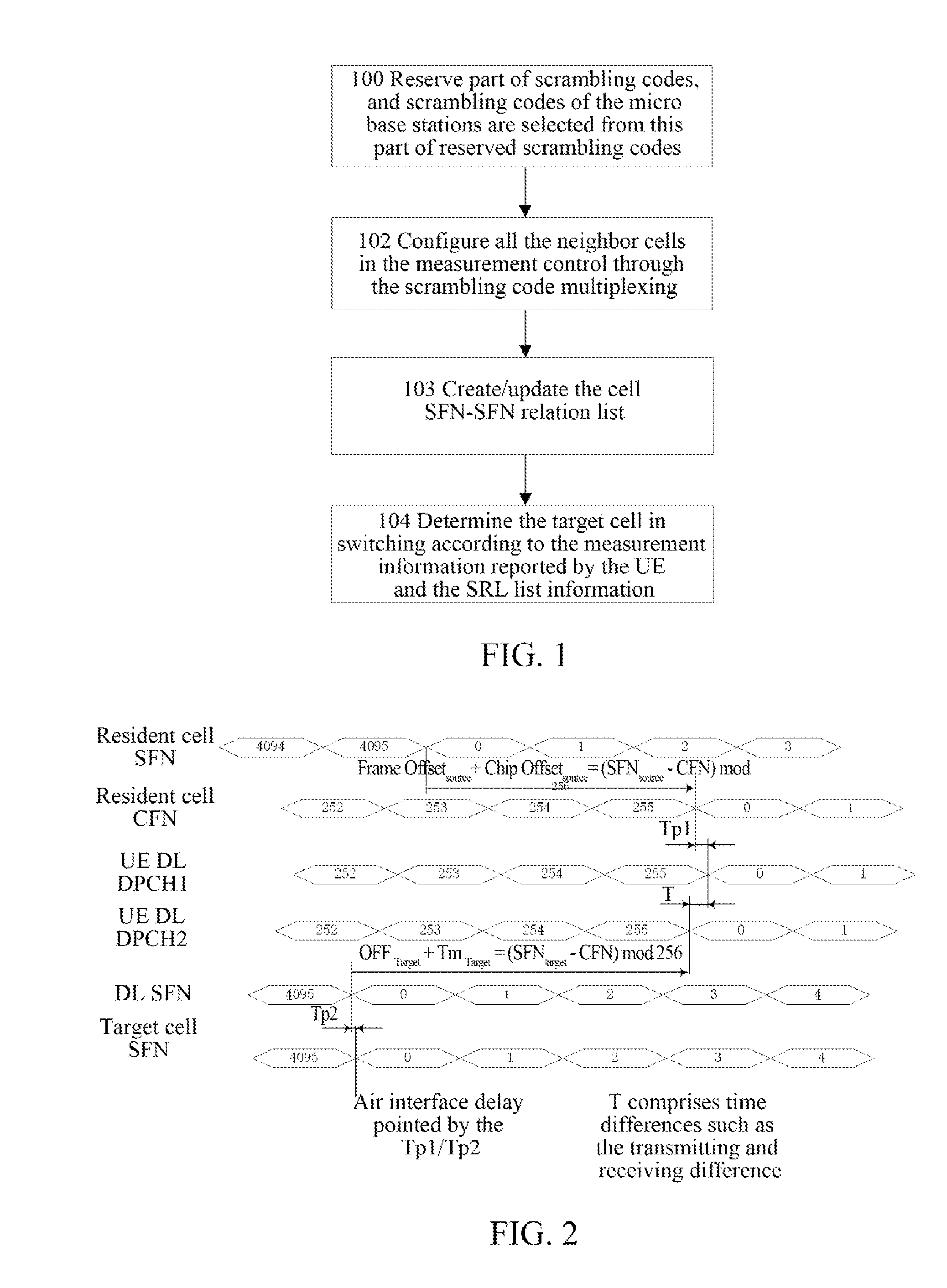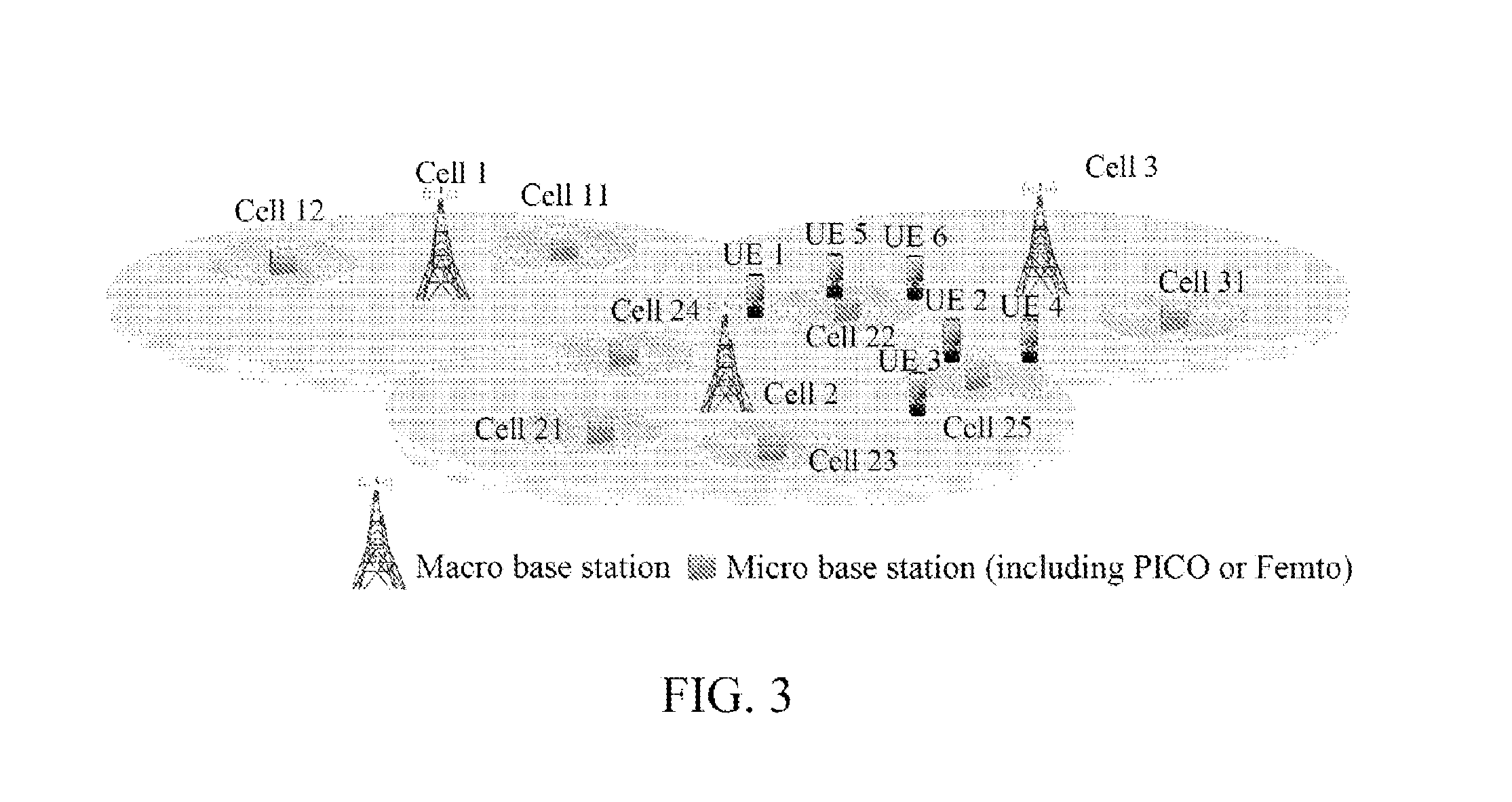Network-Side Device and Macro Base Station-to-Micro Base Station Switching Method
a network-side device and micro-base station technology, applied in the field of network-side devices and macro-base stations to micro-base stations switching methods, can solve the problems of poor indoor coverage quality, large loss of transmission and space, and easy limitation of capacity
- Summary
- Abstract
- Description
- Claims
- Application Information
AI Technical Summary
Benefits of technology
Problems solved by technology
Method used
Image
Examples
first embodiment
The First Embodiment
[0053]The present embodiment provides a macro base station to micro base station switching method, and the method is shown in FIG. 1, comprising the following steps 101-104.
[0054]In step 101, it is to reserve part of scrambling codes, and scrambling codes of the micro base stations are selected from this part of reserved scrambling codes.
[0055]In this step, the number of reserved scrambling codes may not be limited to the restricted number of neighbor cells defined in the 3GPP protocol, that is, the neighbor cells which exceed the restriction of 31 can be reported by way of the detected set.
[0056]In addition, for each micro base station, the different number of scrambling codes and different scrambling codes may be reserved.
[0057]In step 102, the network side configures the multiplexed scrambling code information to the UE.
[0058]Specifically, the network can configure the multiplexed scrambling code information to the UE when filling in the neighbor cell measurem...
second embodiment
The Second Embodiment
[0151]The present embodiment provides a network-side device that can achieve the method of the abovementioned first embodiment, and the network-side device in the present embodiment comprises at least the following modules.
[0152]A first module multiplexes part of scrambling codes in the reserved scrambling codes to micro base station cells, and configures the multiplexed scrambling code information to a user equipment;
[0153]wherein the first module configures the scrambling code information multiplexed by the various micro base station cells to the user equipment when filling in the neighbor cell measurement control.
[0154]It should be noted that, the scrambling codes multiplexed by the first module to various micro base station cells and the number of the scrambling codes are different, moreover, the number of scrambling codes multiplexed by the first module to the micro base station cells can be greater than 31.
[0155]A second module creates a SFN−SFN relation l...
PUM
 Login to View More
Login to View More Abstract
Description
Claims
Application Information
 Login to View More
Login to View More - R&D
- Intellectual Property
- Life Sciences
- Materials
- Tech Scout
- Unparalleled Data Quality
- Higher Quality Content
- 60% Fewer Hallucinations
Browse by: Latest US Patents, China's latest patents, Technical Efficacy Thesaurus, Application Domain, Technology Topic, Popular Technical Reports.
© 2025 PatSnap. All rights reserved.Legal|Privacy policy|Modern Slavery Act Transparency Statement|Sitemap|About US| Contact US: help@patsnap.com



